Cantonese:
Mandarin:
English:
7. Mangroves on Riverbanks
The new channel of Kam Tin River along Nam Sang Wai was constructed in 1997. To compensate for the wetland disrupted by the works, mangroves including Kandelia (Kandelia obovata) and River Mangrove (Aegiceras corniculatum), as well as mangrove associates such as Spiny Bears Breech (Acanthus ilicifolius), are planted along the riverbanks of the new channel and Shan Pui River. Mangroves not only help enrich the ecosystem, but also strengthen riverbanks.
Mangroves grow in estuaries and lower streams of tidal rivers. By
observing the mud mark left on the leaves, you can have a rough idea of
the level of high tide. The mudflats are covered by seawater during high tides, and the salinity fluctuates with tides. Loose, deoxygenated soil is a difficult substrate for most plants to establish. Brutal as these conditions may seem, mangroves thrive here thanks to their special adaptations.
Mangrove species have special adaptations to withstand fluctuating salinity, such as salt glands in leaves to excrete salt, or storing salt in leaves and shedding them to control their salt balance.
"Prop roots" in the shape of arches, laterally growing "cable roots" and large and thick vertical "buttress roots" are special features of mangrove species to improve their anchorage in the unstable substratum.
Certain mangroves can be distinguished by their pen-like "droppers" hanging on tree branches. Droppers are germinated seeds that allow better survival and faster growth on the muddy tidal shore. Droppers can plunge into soil after dropping from plants, or float in the water. The droppers have a characteristic shapes, which help to identify mangrove species.
The bark of mangroves contains a chemical called tannin. This is extracted to make red dye, giving rise to the Chinese name for mangroves: Red Trees.
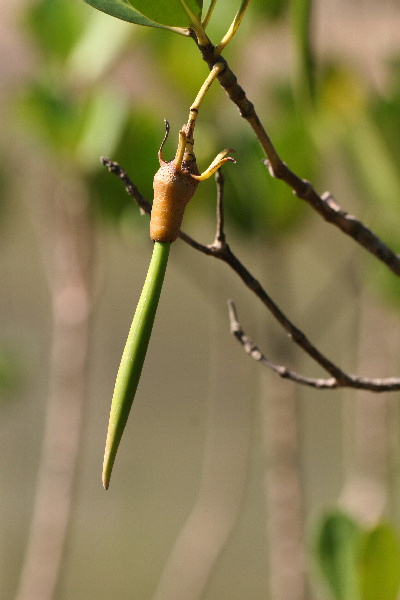
Kendelia (Kandelia obovata)
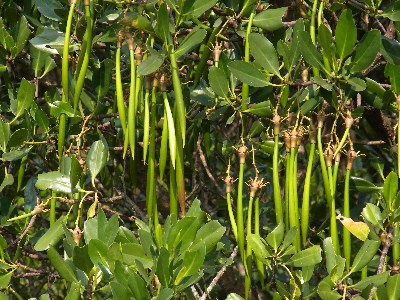
Kendelia (Kandelia obovata)
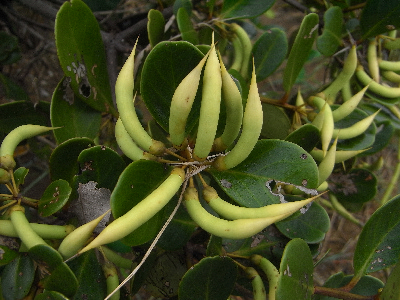
River Mangrove (Aegiceras corniculatum)
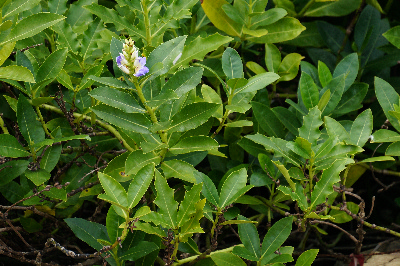
Spiny Bears Breech (Acanthus ilicifolius)
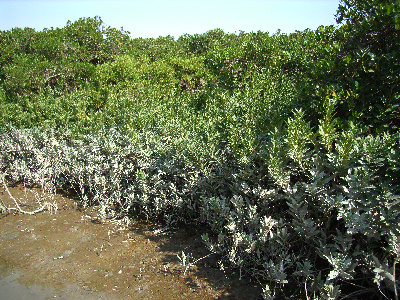
Mud mark left on the leaves of mangroves indicates the high tide level.

